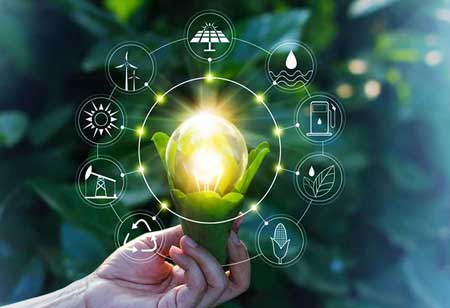Thank you for Subscribing to Energy Business Review Weekly Brief
Future Of The Automobile Industry And Electric Vehicles
Despite the late economic crisis, the automobile industry's search to limit its impact

By
Energy Business Review | Tuesday, January 25, 2022
Stay ahead of the industry with exclusive feature stories on the top companies, expert insights and the latest news delivered straight to your inbox. Subscribe today.
Each technology has unique features like charging over renewable and non-renewable sources and fast and less expensive charging methods.
FREMONT, CA: Despite the late economic crisis, the automobile industry's search to limit its impact on the environment and transform the landscape into a supportable mode of transportation is highly intense.
The electric car maker Tesla manufactures all-electric vehicles, produces clean energy, and manufactures infinitely scalable storage products. On the other hand, Chinese companies invest massive amounts in Telsa to meet and surpass industry-leading battery technology.
Aluminum and zinc-air batteries are less costly and lightweight. In addition, lithium-ion batteries include a family of rechargeable batteries that employ various anode and cathode materials.
Each combination has advantages and disadvantages in safety, performance, cost, and other parameters. For example, zinc batteries will be inexpensive, lighter, and safer than lithium-ion batteries and are expected to hit the market by the end of 2019.
Elon Musk, the co-founder of Tesla, says that the partnership between Japanese electronics manufacturer Panasonic and Tesla will produce 60% of the world's electric vehicle battery output.
Tesla uses NCA's formula (nickel cobalt aluminum) to deliver cobalt batteries. Tesla is planning to bring its first electric semi-truck in the coming days. The disadvantage of the zinc battery is its susceptibility to corrosion, whereby the batteries miss their stored charge.
The mechanical engineers at the Massachusetts Institute of Technology, Cambridge, found a new method that inhibits corrosion. Means demonstrated in an aluminum-air cell achieve a 420% increase in usable energy density and a 99.99% reduction in pollution, reducing self-discharge to a rate of 0.02% per month and allowing system energy densities of 700 watt-hours per liter and 900 watt-hours per kilogram.
The International Energy Agency (IEA) predicts that EVs alone could reach 13 million by 2020. Toyota is also making a new solid-state battery technology that offers high-capacity battery storage. Dyson, a household appliances manufacturer, is also creating electric cars, intending to make them available to users in the upcoming years. Furthermore, the mobile industry is breaking new pathways in finding fast, efficient, reliable smartphone batteries. New portable battery technologies include transparent solar chargers, foam, and urine-powered batteries. Each technology has unique features like charging over renewable and non-renewable sources and fast and less expensive charging methods. Thus, the future generation will witness a revolution in battery technology across various industries.






